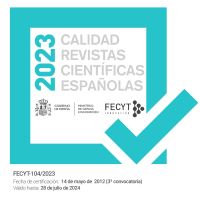Thinking styles in teachers with low and high professional well-being
DOI:
https://doi.org/10.5944/reop.vol.23.num.2.2012.11419Keywords:
thinking styles, teacher well-being, burnout, theory of mental self-government, mental healthAbstract
ABSTRACT
In the theory of Sternberg's mental self-government, thinking styles have been defined as a preferred way of thinking. It is suggested that thinking styles are the bridges between personality and the intelligence that people construct for their adjustment. Different researches suggest that teacher styles determine their perception of reality and satisfaction with the students. The aim of this research, developed with a correlational methodology, is to establish what styles of thinking were characterized by the teachers of low psycho-professional well-being. The sample is formed by 774 teachers of all the levels up to higher education (63% women and 37% males), mostly belonging (92%) to public centers of the Island of Tenerife. The instruments used are the Thinking Styles Inventory (TSI) of Sternberg adapted to teachers and the IBADA (Self-assessed Teaching Well-Being Inventory) of Jiménez, Serio and Rosales (2008). Significant results have been reached which show that the teachers with worse well-being, in comparison with the teachers with better evaluation of their professional well-being, have typical thinking styles. The teachers with high psyco-professional well-being are characterized for having the following thinking styles of Sternberg: extrovert, liberal, judicial and hierarchic.






